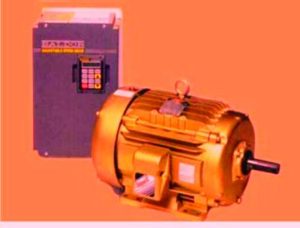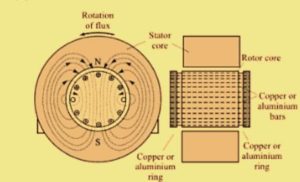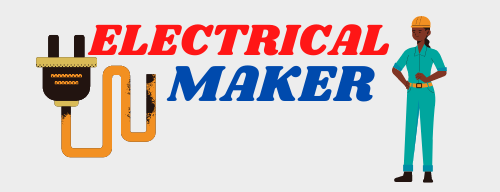Single Phase Induction Motor
A single-phase induction motor in its physical appearance is similar to a three-phase squirrel cage induction motor. The 1-Φ phase induction motor has a distributed single-phase winding while in the case of the 3-Φ induction motor the stator has distributed three-phase windings.
On comparing the performance characteristics of the single-phase induction motor and three-phase induction motor, a 1-Φ induction motor is less satisfactory than a three-phase induction motor.

Three-phase induction is provided with the three-phase supply and when if any one phase of the three-phase induction motor is opened during the running condition with any moderate load, then it is observed that the motor continues to run at the lower speed. This shows that the three-phase induction motor becomes single-phase induction when any one phase of the three-phase induction motor is opened.
Construction of Single-Phase Induction motor
Similar to all other motors 1-Φ induction motor also has two main parts rotor and stator. The stator as the name indicates it is the stationary part of the induction motor. The stator of a 1-Φ induction motor is supplied with a single-phase ac supply.
The rotor is the rotating part of the induction motor, Rotor of the single-phase induction motor is the same as that of the rotor of the three-phase induction motor except for the shaded pole motors. The rotor of the 1-Φ induction motor is connected to the load with the shaft.
The stator and the rotor of a 1-Φ induction motor are magnetically coupled but they are not electrically connected so there is a uniform air gap between the stator and the rotor.
It can be wound for any even number of poles, two, four, six being the most common. Adjacent poles have an opposite magnetic property and synchronous speed equation, NS =120f/p also applies. Here p is the number of poles and f is the supply frequency.

The stator slots are distributed uniformly so a single-phase double layer winding is used. A simple single-phase winding will not produce any rotating magnetic field and also no starting torque. So it is, therefore, necessary to split the winding of the stator into two parts, and each part is displaced in space on the stator to make the motor self-starting.
Working Principle of Single-phase Induction motor
When a single-phase AC supply is given to the stator winding of a 1-Φ induction motor, the alternating current starts flowing through the stator or main winding.
And due to this alternating current, an alternating flux is called the main flux is produced. The main flux produced here also links with the rotor conductors and hence cuts the rotor conductors.
According to faraday’s law of electromagnetic induction, an emf gets induced in the rotor due to the flux linkage. As we know that the rotor circuit is closed, the current starts to flow in the rotor which is known as the rotor current.
This rotor current also produces its own flux called rotor flux. Since this rotor flux is produced due to the induction principle, the motor working on this principle got its name as an induction motor.
Now here we can see that there are two fluxes one is the main flux and the other is called rotor flux. And these two fluxes produce the desired torque which is required by the motor to rotate.
Why Single Phase Induction Motor is not a Self-starting motor?
According to the double field revolving theory, Any alternating quantity can be resolved into two components and each component has a magnitude equal to half of the maximum magnitude of the alternating quantity and both of these components rotate in opposite directions to each other.
Let us consider a flux Φ is resolved into two components one is Φm/2 and the other is –Φm/2. Here both these components rotate in opposite directions to each other, i.e if one Φm/2 rotates in a clockwise direction then the other Φm/2 rotates in the anticlockwise direction.
When we give a single-phase ac supply to the stator winding of a 1-Φ induction motor then it will produce its flux of magnitude Φm.
Now according to the double field revolving theory, this alternating flux Φm is divided into two components of equal magnitude, Φm/2 each. Each of these components will rotate in opposite direction, with synchronous speed Ns.
Let us call these two components of the alternating flux as a forward component of flux, Φf, and a backward component of alternating flux as Φb.
Here on finding the resultant of these two components of flux at any instant of time will give the value of instantaneous stator flux at that particular instant.
Φr=Φm/2 + Φm/2
Or Rotating Flux, Φr= Φf +Φb
Here at the starting condition, both the forward and backward components of alternating flux are exactly opposite to each other. And also both the components of the alternating flux are equal in magnitude.
So both the components will cancel each other and then the net effective torque experienced by the rotor at the starting condition is zero. So we can say that 1-Φ induction motors are not self-starting motors.
Application of single phase Induction Motor
- These types of motor are extensively used in industries especially in the fraction horse-power fields.
- These are used for an electric drive for low-power constant speed machines such as domestic apparatus, machine tools, and agriculture machinery in circumstances where a three-phase supply is not readily available.
- The large demand for this type of motor in sizes ranging from a fraction of horse-power up to about 5 horse-power.
Advantages of Single Phase induction motor
- This induction motor is smaller in size and lighter in weight.
- It is also cheaper in cost.
- These motors are highly efficient.
- These motor also requires less maintenance.
- 1-phase induction motors have a longer life.
- Single-phase induction motors can be designed in a variety of sizes.
Disadvantages of Single Phase induction motor
We know that these motors are used only for small outputs and not used for large powers as they suffer from many disadvantages and are never used in the case where three-phase machines can be adopted.
The main disadvantages are as follow,
- For a given frame size and temperature, its output is only 50% of the three-phase induction motor.
- The single phase induction motor is not self-started.
- These motors have a lower power factor.
- Efficiency is lower.
- These motors do not have a starting torque.
- For the same power output, these motors are more expensive than three-phase induction motors.
Frequently Asked Questions (FAQ)
Q1. In Single Phase Induction motor capacitor is used for
(a)Improving Power Factor (b) Improving the starting torque
(c) Reducing the harmonics (d) Starting the motor
Ans: (d) Starting the Motor
Q2. Which type of motor is used in Refrigerators?
(a) Synchronous motor (b) Universal motor
(c) 1-phase induction motor (d) None of these
Ans: (c) 1-phase induction motor
Q3. Starting torque of a single-phase induction motor is
(a) high (b) low
(c) moderate (d) zero
Ans: (d) zero
I hope you like this article”Single Phase induction motor” comment for other electrical engineering important topics.
